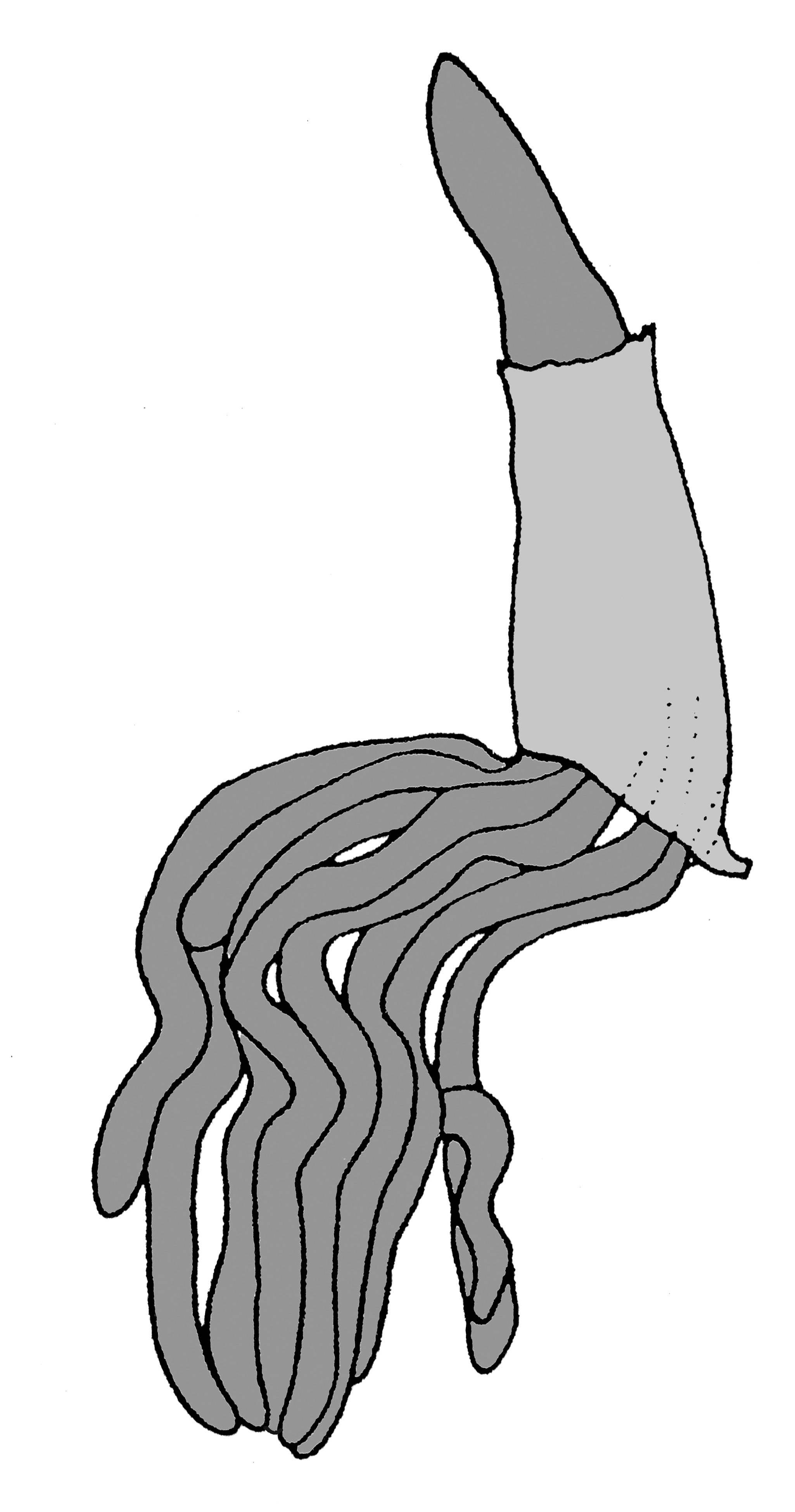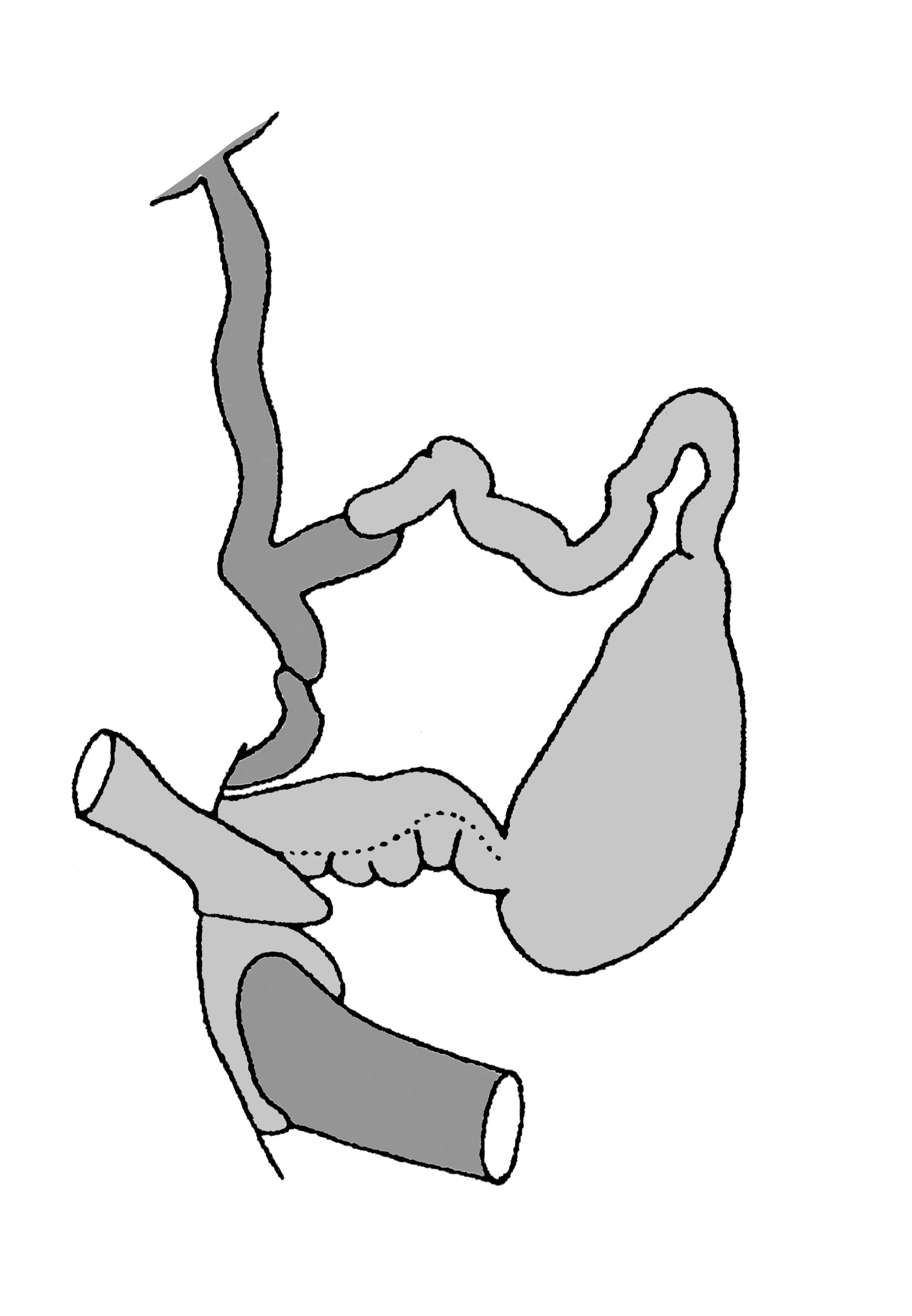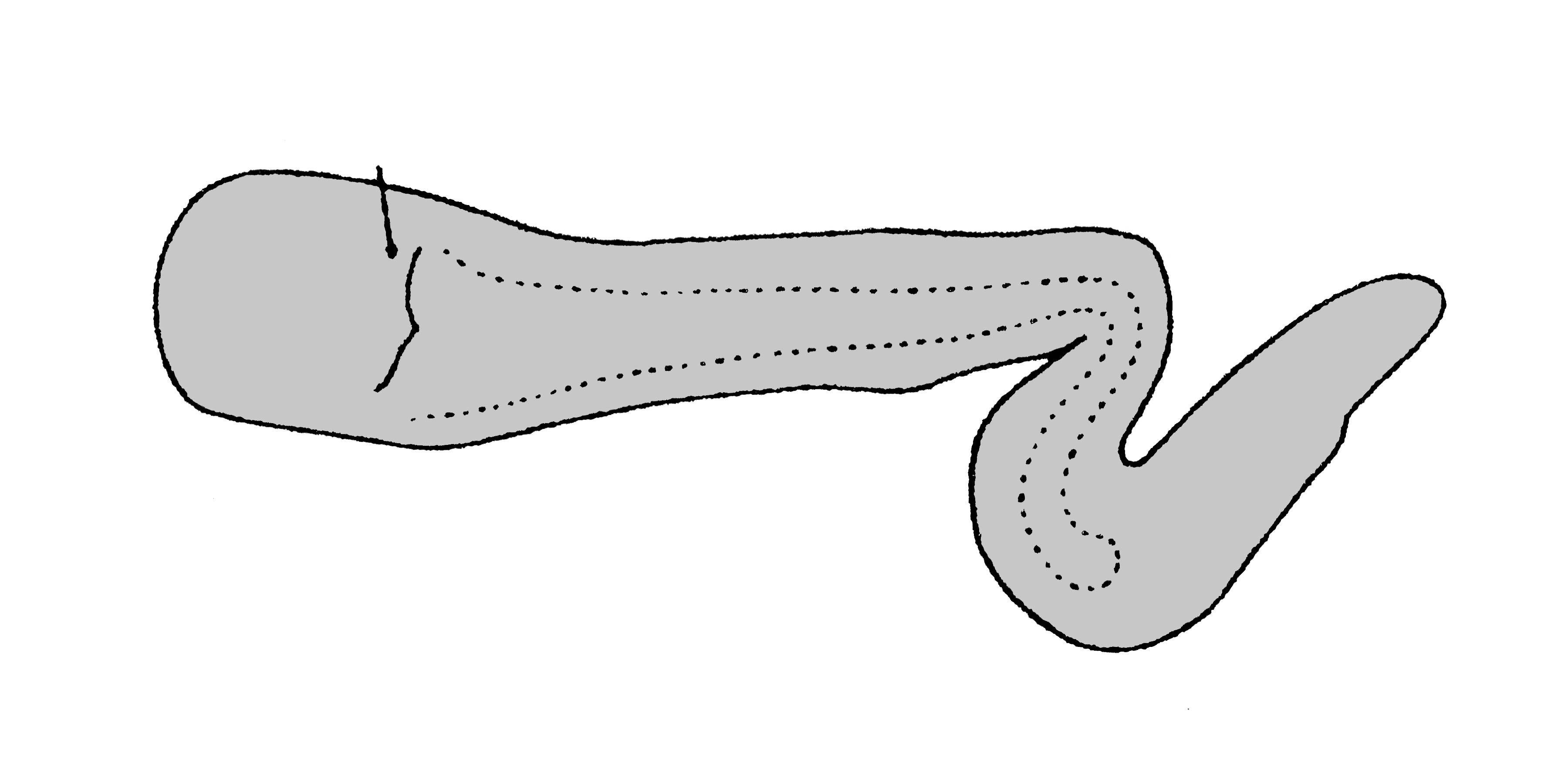Veronicellidae: Diplosolenodes occidentalis
|
Diplosolenodes occidentalis. (Photo: © L. Guilding, Wikipedia) |
|
Diplosolenodes occidentalis: genitalia-penis. (Photo: © T.W. Thome, modified by K. Weigel, University of Florida) |
|
Diplosolenodes occidentalis: genitalia-penial gland. (Photo: © T.W. Thome, modified by K. Weigel, University of Florida) |
|
Diplosolenodes occidentalis: genitalia-part of the posterior genitalia. (Photo: © T.W. Thome, modified by K. Weigel, University of Florida) |
|
Diplosolenodes occidentalis: genitalia-pedal gland. (Photo: © T.W. Thome, modified by K. Weigel, University of Florida) |
Family
Veronicellidae
Species
Diplosolenodes occidentalis Guilding, 1825
Common name
Spotted leatherleaf slug
Description
Mature specimens of Diplosolenodes occidentalis have the potential to extend up to 60 mm. This species characteristically have black speckling on the dorsal surface of its grey-colored body; however, juveniles lack this pigmentation. In rare cases adult specimens may also lack the characteristic speckling. The ocular tentaclesTentacles:
Sensory projections on the head end of a mollusc. There are generally two pairs; upper (posterior) and smaller, lower (anterior). The upper pair bears the eyes. In many snails the eyes are located at the tips of this structure; however, in Basommatophoran snail species, the eyes are located at the base of the tentacles.
are dark colored and the sole is pale grey.
Native range
Lesser Antilles
Distribution
North America:
- U.S.: Introduced to greenhouses in Oklahoma, but apparently not established in the U.S.
South and Central America
Caribbean: Lesser Antilles, Greater Antilles
Ecology
The spotted leatherleaf slugSlug:
A snail that either does not possess a shell or has one that is very reduced (no definite coiling) or internal.
prefers undisturbed environments; however, it may be observed in agricultural areas where it is generally a minor pest of perennial crops. Crop species eaten include Brassicaceae (e.g., cabbage), pepper, lettuce, tomato and beans.
Synonyms
- Vaginula occidentalis Angas, 1884
- Vaginulus occidentalis
- Vaginula punctatissima (Semper) Pilsbry 1892
- Diplosolenodes occidentalis Thome, 1997.
- Veronicella occidentalis Guildingm, 1825
- Veronicella lavis (Ferussac)
References
Branson 1962Branson 1962:
Branson, B.A. 1962. The slugs (Gastropoda: Pulmonata) of Oklahoma and Kansas with New Records. Transactions of the Kansas Academy of Science 65(2): 110-119.; Cowie et al. 2009; Robinson et al. 2009Robinson et al. 2009:
Robinson, D.G., Hovestadt, A., Fields, A. and Breure, A.S.H. 2009. The land Mollusca of Dominica (Lesser Antilles), with notes on some enigmatic or rare species. Zoologische Mededelingen 83: 615-650.; Rosenberg and Muratov 2006Rosenberg and Muratov 2006:
Rosenberg, G. and I.V. Muratov. 2006. Status report on the terrestrial Mollusca of Jamaica. Proceedings of the Academy of Natural Sciences of Philadelphia 155: 117-161.; Thome 1989Thome 1989:
Thome, J.W. 1989. Annotated and illustrated preliminary list of the Veronicellidae (Mollusca: Gastropoda) of the Antilles, and Central and North America. Journal of Medical and Applied Malacology. 1: 11-28.






